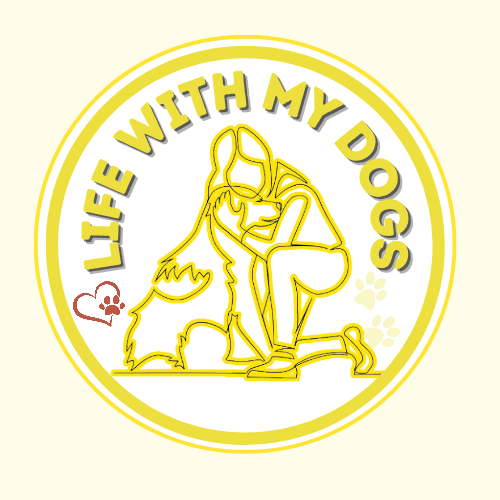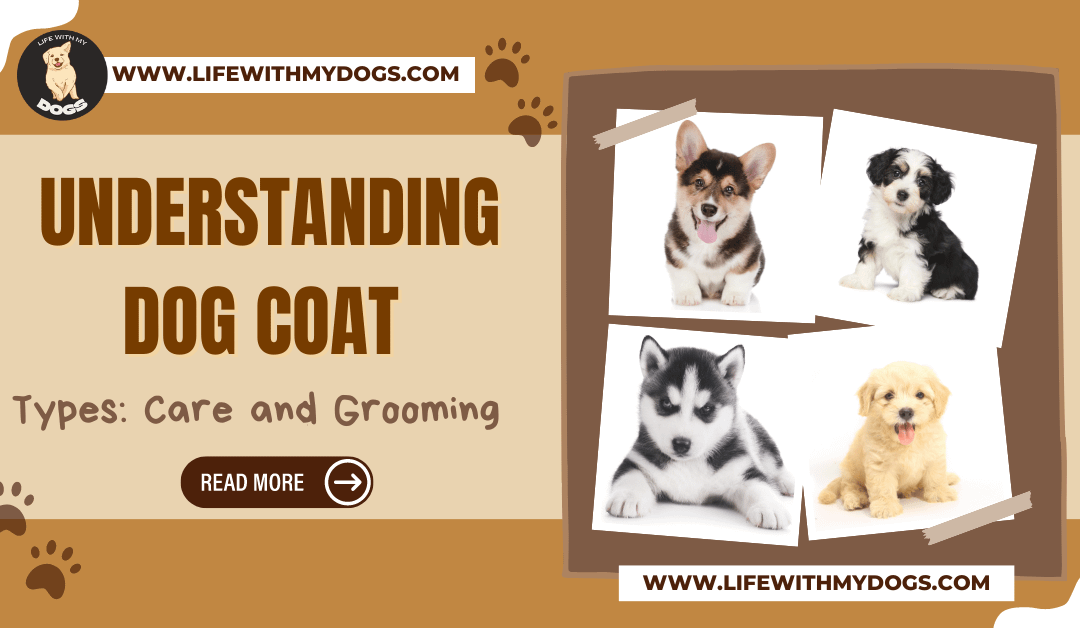LifeWithMyDogs is supported by our audience. When you purchase through one of our links, we may earn a small affiliate commission. As an Amazon Associate I earn from qualifying purchases. Your cost is not affected.
**********
Hey there! You’re in the right place if you’ve ever wondered why some dogs have long, flowing fur while others have short, sleek coats. Understanding Dog Coat Types is essential for proper grooming and care. It’s not just about making your pup look good (although that’s a bonus!) but also about keeping them healthy and comfortable.
Different breeds of dogs possess various coats, and each type necessitates specific grooming techniques. From smooth coats that need regular brushing to curly coats that can easily mat, knowing how to care for your dog’s fur can make a difference in their well-being. So, grab your grooming tools, and let’s dive into Dog Coat Types!
Decoding Dog Coats: Tips for Care and Grooming
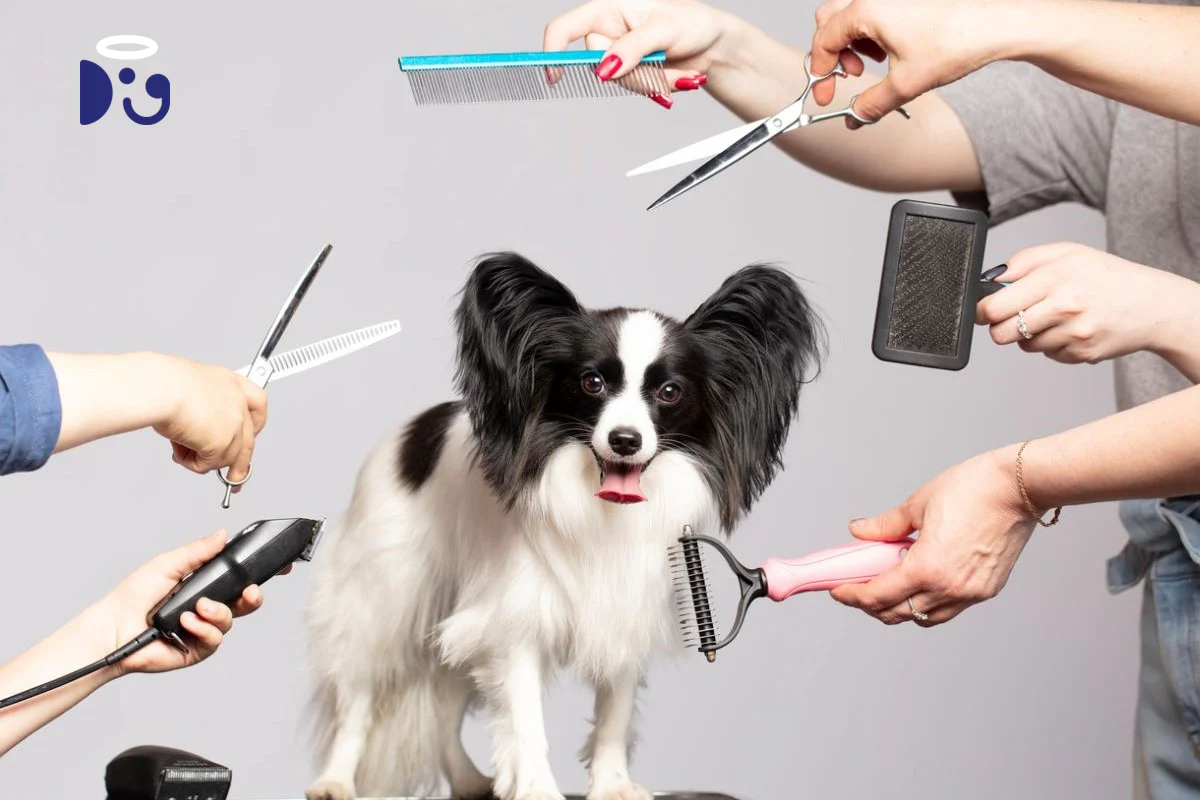
Photo by: Doglyness
Our furry family includes dogs with short hair, curly poodle coats, long double coats, and even single-coated, long-haired furkids. Each coat type needs unique care and grooming to keep them at their best. Understanding dog coat types is the first step to having happy and healthy companions. Knowing your dog’s coat type is crucial for proper grooming and overall health.
Whether your furry friend has a smooth, double, long, wire, curly, or hairless coat, each type requires specific care. This blog provides simple tips to help you keep your dog’s fur or skin in top condition, ensuring it always looks and feels its best.
Key Takeaways
- Dogs come in various coat types, such as smooth, double, long, wire, curly, and hairless, each needing specific grooming techniques to keep them healthy and looking their best.
- Regular grooming is crucial for all types of coats. This includes brushing, combing, bathing, and specialized techniques like hand stripping for wire coats and clipping for curly coats.
- Different seasons require different coat care routines; shedding season requires frequent brushing, winter care involves moisture-retaining products, and summer care focuses on managing heat and protecting from the sun.
- Professional grooming services offer specialized care for dogs, particularly those with challenging coat types or who may be difficult to handle.

Categorizing Dog Coat Types: A Guide to Grooming and Care
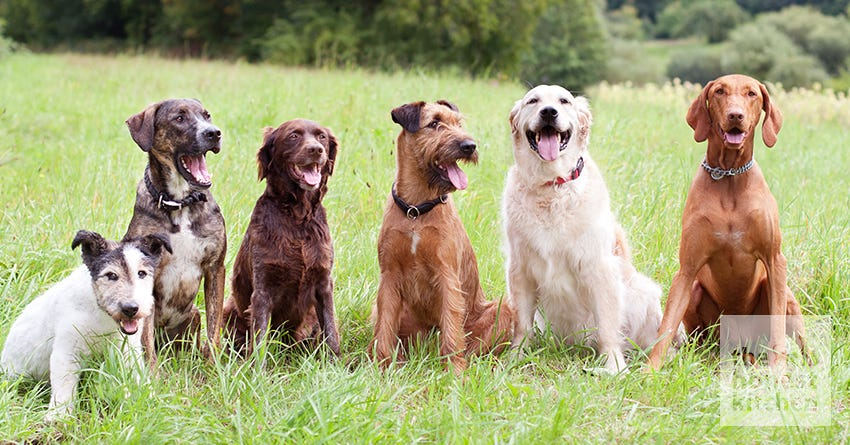
Photo by: The Honest Kitchen
When it comes to dog coats, it’s not one-size-fits-all. Just like humans have diverse hair types, dogs have various coat types, each with unique characteristics and care needs. In the canine world, we categorize dog coat types into five basic categories:
Smooth Coats
Smooth-coated dogs like Boxers and Dachshunds have coats that lie close to their bodies, showing off their muscle definition. While their coats may seem simple, they still need regular grooming to keep them silky and smooth. Here are some grooming tips for smooth-coated dogs:
- Use a soft bristle brush regularly to remove loose hair and distribute skin oils.
- Give them regular baths to maintain their coat’s cleanliness and health.

Double Coats
Double-coated dogs like Newfoundlands, Collies, and Siberian Huskies have a unique two-layer coat system. Their undercoat is thick and fluffy, providing insulation, while the longer outer coat shields them from harsh weather. These pups shed their undercoat twice a year, reacting to the seasons’ shifts. To keep their coat healthy, brushing deep enough to reach the skin is crucial. This helps remove the undercoat and prevents tangles and mats from forming.

Long Coats
Long-coated dogs, like Afghan Hounds and Old English Sheepdogs, are the supermodels of the doggy world. Their luxurious, flowing fur is stunning, but it needs serious upkeep. You’ll want to give them a good combing every day and brush them twice daily to keep that coat silky smooth and prevent nasty tangles or mats. And don’t forget about their spa days – they’ll need a trip to the groomer every 10-12 weeks to keep everything in tip-top shape!

Wire Coats
Wire coats give dogs such as the German Wirehaired Pointer and Wire Fox Terrier that distinctive rugged look. These coats are rough and stiff, standing out from the body, and need specific grooming practices like hand stripping. These dogs shouldn’t be bathed too often to keep their hair from drying out. When a bath is necessary, using a shampoo for wirecoats is best.

Curly Coats
Dog lovers who adore curly coats will surely be drawn to breeds like Poodles and Portuguese Water Dogs, often the stars of any dog park. Their hair varies from soft waves to tight curls. Regular grooming with a pin brush and conditioning spray is essential to keep these coats healthy and shiny. Although they shed less, these dogs still need regular grooming. Breeds like Poodles may need clipping to maintain their coat’s length and shape.

Hairless Dogs
Hairless dogs, like the Chinese Crested, stand out in a crowd of canines. These unique beauties don’t have fur, but they make up for it with their unique skin patterns. They need special skin care routines because they lack that protective fur layer. This includes frequent baths, using a dog-safe lotion to keep their skin moisturized, and making sure they’re protected from extreme weather conditions.

By: Go Groomer
Did You Know?
A dog’s fur is vital for protection. It helps regulate its body temperature, keeps its skin healthy, and shields it from the sun, rain, and other elements.
Mastering Grooming: Techniques for Different Dog Coat Types
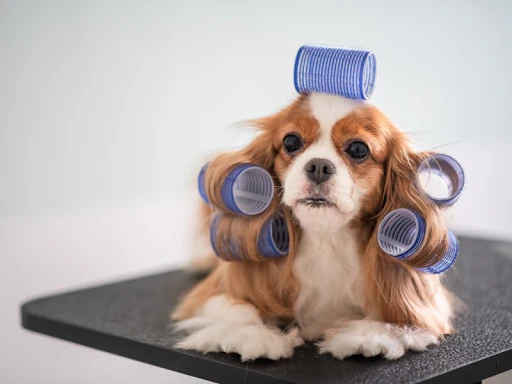
Photo by: Joyride Harness
Now that we’ve got a basic understanding of dog coat types let’s move on to different grooming techniques. Each coat type has its own specific grooming practices tailored to its unique needs.
Brushing and Combing
Brushing and combing are essential parts of any grooming routine. Regularly grooming and brushing your dog’s coat helps improve its condition by spreading natural skin oils, moisturizing skin, and removing dead hair. The trick is to brush in the direction the fur grows and gradually extend the length of each brushing session.
And remember, the type of brush you choose makes a difference! A pin brush works well for medium to long fur and silky or curly coats, while a smooth bristle brush is perfect for dogs with short and smooth coats. A slicker brush can also be a great choice for certain types of fur.
Bathing and Drying
The frequency of bathing can affect your dog’s skin and coat health. That’s why figuring out the right bathing routine for your dog’s breed and coat type is important. For instance, dogs with smooth coats need a bath every twelve weeks, while curly-coated dogs should be towel-dried after a bath instead of blow-dried to manage their coat and prevent tangles. Shampoo and conditioners made specifically for dogs can also help keep their skin from getting too dry and protect against skin issues caused by the weather.
Hand Stripping and Clipping
Hand stripping is a grooming technique for certain breeds, especially Terriers and Schnauzers, to keep their wiry coats in the right texture and color. This method involves carefully pulling loose, dead hairs by hand or with tools like stripping knives and stones. Hand stripping is usually done twice a year for these breeds to maintain a healthy coat and keep them looking their best.
Did You Know?
Regular grooming isn’t just about looks; it helps your dog sniff out trouble, too! When a dog’s face is clean and free of matted fur, it can pick up scents better, which makes it more aware of its surroundings.
Seasonal Coat Care: Grooming Tips
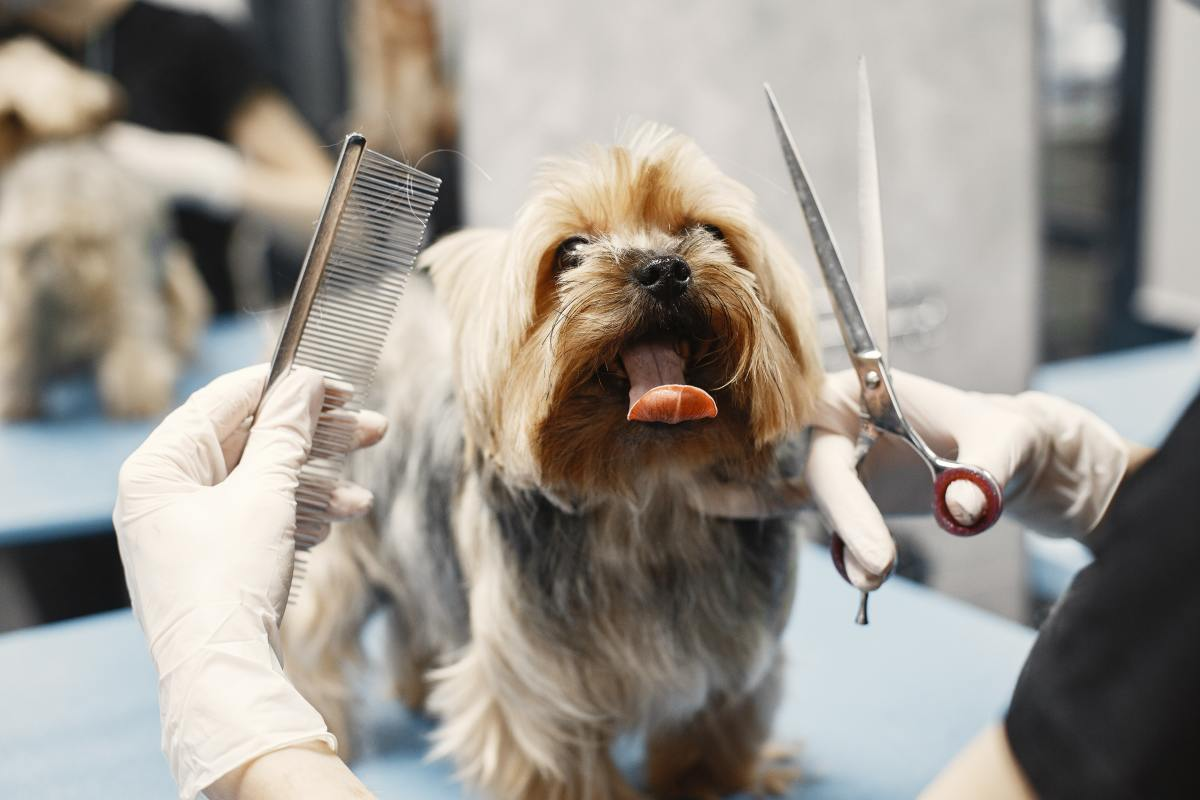
Photo by: Library – Ecosystem.build
Just like we change our clothing for different seasons, our furry friends’ coat care needs also change with the weather. Adapting to these seasonal shifts is really important for a dog’s comfort and health. Let’s look at what this means for different dog coat types during the shedding season, winter, and summer.
Shedding Season
Shedding season can test your patience, especially if you’ve got a double-coated breed like Akitas or Samoyeds. During this time, you’ll find yourself brushing more often and using de-shedding tools to keep up with all that loose fur. Bathing them every 12 weeks during shedding season, then towel drying and blow-drying while you brush, will also help eliminate that extra fur effectively.
Winter Coat Care
Winter can bring holiday cheer but also dry, itchy skin for our furry friends. When the indoor air is heated, it can lower humidity levels, which leads to skin dryness and static in the coat. Regularly using pet-specific shampoos and conditioners during this season can help combat these issues. Ensuring your dog’s coat is the right length for winter is also important. Long-haired breeds need their coat to stay warm, while short-haired breeds might need extra warmth from doggy sweaters or jackets when they go outside.
Summer Coat Care
Our furry friends need some extra TLC to stay comfortable and healthy as the weather warms up. Regular brushing in the summer helps remove loose fur, preventing tangles and allowing air to circulate through their coat. Light-colored dogs are more susceptible to sunburn and UV damage, so providing shade and using pet-safe sunscreen on their exposed areas is crucial. And remember, it’s important to adjust your bathing routine in the summer. Using moisturizing products can help prevent your dog’s skin from drying out and keep their coat looking healthy.
Coat Care Challenges: Common Issues and Solutions
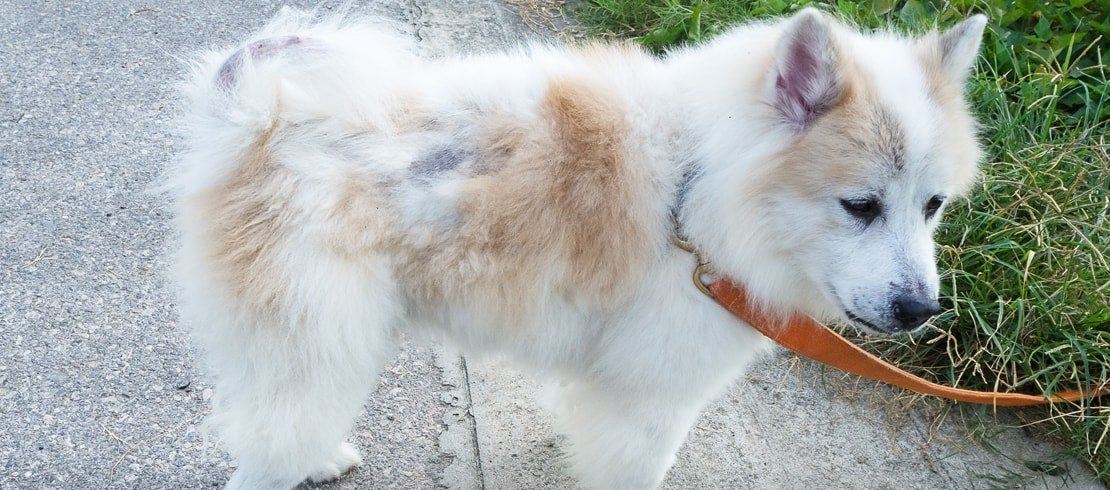
Photo by: Your Pet and You – Elanco
Caring for your dog’s coat is only sometimes a walk in the park. Sometimes, our furry friends can face issues that lead to discomfort or health problems. But don’t worry! We can tackle these common problems head-on with the right knowledge and care. Let’s delve into these issues and suggest some effective solutions. Understanding your dog’s coat types is essential for proper grooming and care.
Matted Fur
Long-coated dogs often get tangled fur, which can bother them. Brushing them every day can prevent this. If things get too tangled, getting a professional to help is best. Just remember, it’s easier to stop it from happening in the first place than to fix it later!
Dry or Brittle Coats
If your dog’s coat feels dry or brittle, it might be a sign that it’s missing some key nutrients. A diet with plenty of protein and essential fatty acids can really help improve its condition. Plus, regular brushing can stimulate the skin and hair follicles, which boosts natural oil production and makes the coat shiny.
Skin Irritations and Allergies
Skin irritations and allergies can make your dog uncomfortable. They can usually be managed with good grooming, controlling fleas and ticks, and talking to your vet.
Professional Grooming Services: Keeping Your Dog Looking and Feeling Their Best
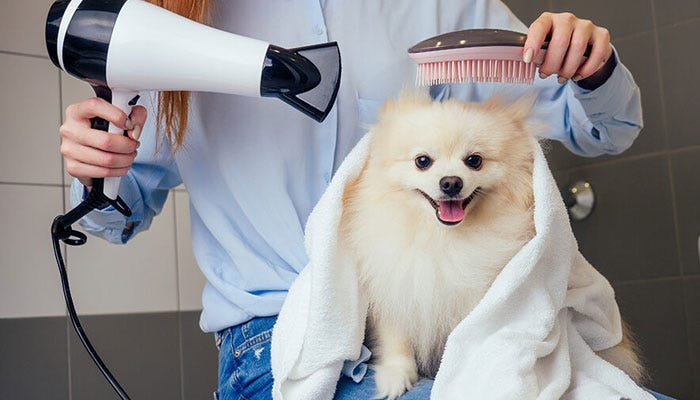
Photo by: Medium
Sometimes, no matter how hard we try, we might need professional help, especially when dealing with specific dog coat types. Professional grooming services provide specialized care for dogs, especially those with tricky coat types or who are difficult to handle. Even if you’re great at grooming your dog at home, these services can be a valuable addition to your dog’s grooming routine.
Mastering Dog Coat Care: A Guide to Happy and Healthy Pups
Dog coat types vary greatly, and each type has specific grooming needs. Whether your pup has a smooth, double, long, wire, curly, or hairless coat, it’s important to understand these differences to keep them happy and healthy. Follow the tips above to ensure your furry friend’s coat stays in great condition all year.

We’ve uncovered the importance of seasonal coat care and addressed common coat-related issues and their solutions. As dog owners, it’s our responsibility to ensure our furry friends are comfortable and healthy. Remember, a well-groomed coat is more than just a beauty statement—it’s a testament to our love and care for our dogs.
Frequently Asked Questions
What Breeds Have a Drop and Silky Coat?
Breeds like Afghan Hounds, Shih Tzus, Yorkshire Terriers, and Papillons have a drop and silky coat, which needs lots of moisture to keep the skin smooth and flat. So, these breeds require regular grooming and care to maintain their coat.
How Often Should I Groom My Dog?
How often you groom your dog depends on its coat type. If you’ve got a smooth-coated dog, you won’t need to do much grooming at all. But for those long-coated pups, you’ll want to groom them daily to keep tangles and mats from building up. Just adjust how often you groom based on what kind of coat your dog has.
What is Hand Stripping?
Hand stripping is a grooming technique used for certain dog breeds, such as Terriers and Schnauzers, to maintain their wiry coats. It involves pulling loose, dead hairs by hand or with specific tools. This method helps preserve the proper texture and color of their coats.
Embark on an Adventure in the Pet Lover’s Paradise!
Dive into a world of furry friends and fantastic finds by connecting with us on social media! Immerse yourself in captivating content insightful product reviews, and become a part of a vibrant community.
Instagram: lifewithmydogs2 Follow us on Instagram for an overflow of heartwarming snapshots and exciting pet escapades!
Pinterest:lifewithmydogs2 Explore a treasure trove of pet inspiration and ideas on Pinterest, where each pin leads you to creative possibilities!
Facebook: 1LWMD Like us on Facebook to keep your finger on the pulse of all pets – from heartwarming stories to the latest pet gear trends!
Twitter: LifeWithMyDogs9 Join the conversation on Twitter, where you can chirp away about the newest pet happenings and stay ahead of the pack with the latest pet trends!
